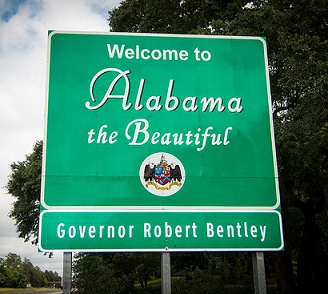By Lee Hedgepeth
Alabama Political Reporter
MONTGOMERY – A recent string of studies released by various nonprofit organizations portray different aspects of Alabama life in a rather negative light, ranking the Yellowhammer State one of the most publicly corrupt, most unemployed and most under-educated nationwide.
Public Corruption
Earlier this week a study coauthored by professors at the University of Hong Kong and Indiana University concluded that Alabama is the sixth most corrupt state in the US, based on the number of public officials convicted of federal corruption laws over the last three decades.
Focusing on the cost of such public corruption, the study demonstrates that corrupt states cost the taxpayers more on average than non corrupt states.
“In the ten most corrupt states,” the study says, “simply reducing corruption to an average level would lower annual state spending by $1,308 per person – or 5.3 percent of state expenditures.”
The reason for the increased spending in corrupt states like Alabama, is because public officials opt to spend money on higher cost investments that are easily used to bribe; such as spending on real estate or private construction contracts over educational spending.
Unemployment
According to recent Labor Department statistics pointed out by the Wall Street Journal, over the last year, only eleven metropolitan areas nationwide saw increases in unemployment rates; a majority of them, including Montgomery, Huntsville and Mobile are in Alabama.
According to the WSJ, “Carolyn Trent, a socioeconomic analyst at the University of Alabama’s Center for Business and Economic Research, said declines in government jobs at all levels, among other reasons, contributed to the increases in the metro area jobless rates.”
That does not come as a surprise. The $1 billion dollars in savings announced by Governor Bentley earlier this year as part of his “Right Size Alabama” campaign included the loss of 4,509 government jobs, which totaled 11.4 percent of those employed by the State.
K-12
Yesterday, national consulting firm Augenblick, Palaich, and Associates Inc. presented preliminary results of their year-long study of the funding of Alabama’s public schools to the State Board of Education.
Some of the results revealed were staggering, with funding disparity between school districts not only evident, but increasing from previous years. In 2013, average student spending in the most wealthy districts in Alabama was almost double that of student spending in the poorest districts, with a difference between the two amounting to around $6,000 per student annually, up from around a $5,700 difference in 2007.
One of the consulting firm’s senior associates emphasized wealth of an area as an indicator of educational funding in the state:
“At this point, the local wealth of the district is a pretty strong driver of how much money is available to fund education services in that district,” he explained, going on to say that states with good school funding schemes treat all students and taxpayers the same, not relying on local, wealth based funding.
Further, the decrease in per pupil funding was not due to an increase in students. Between the same years above (2007-2013) about 60 percent of schools saw a decrease in enrollment numbers.
Coincidentally, the Indiana University public corruption study concluded that in areas with public corruption, average expenditures on education are much less.















































